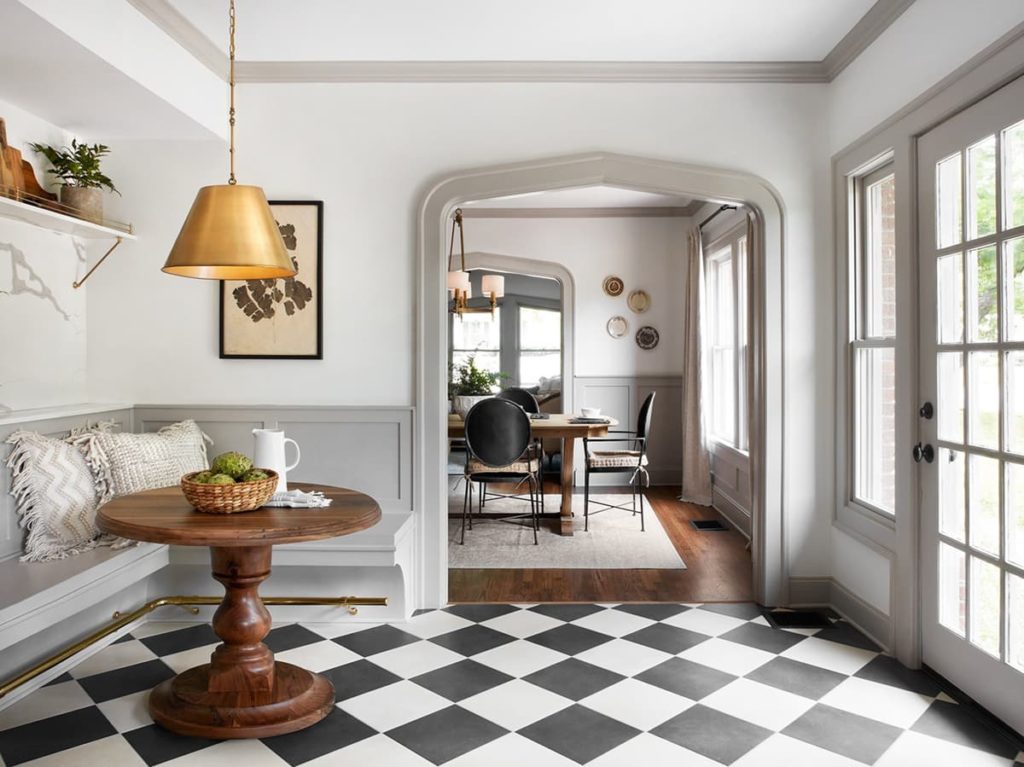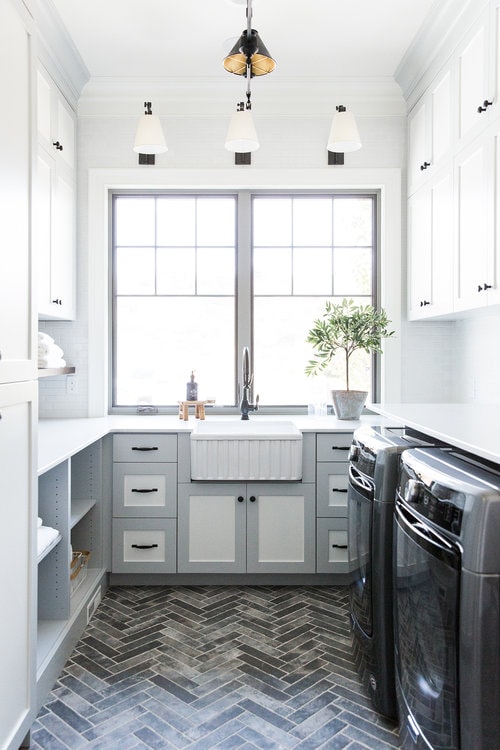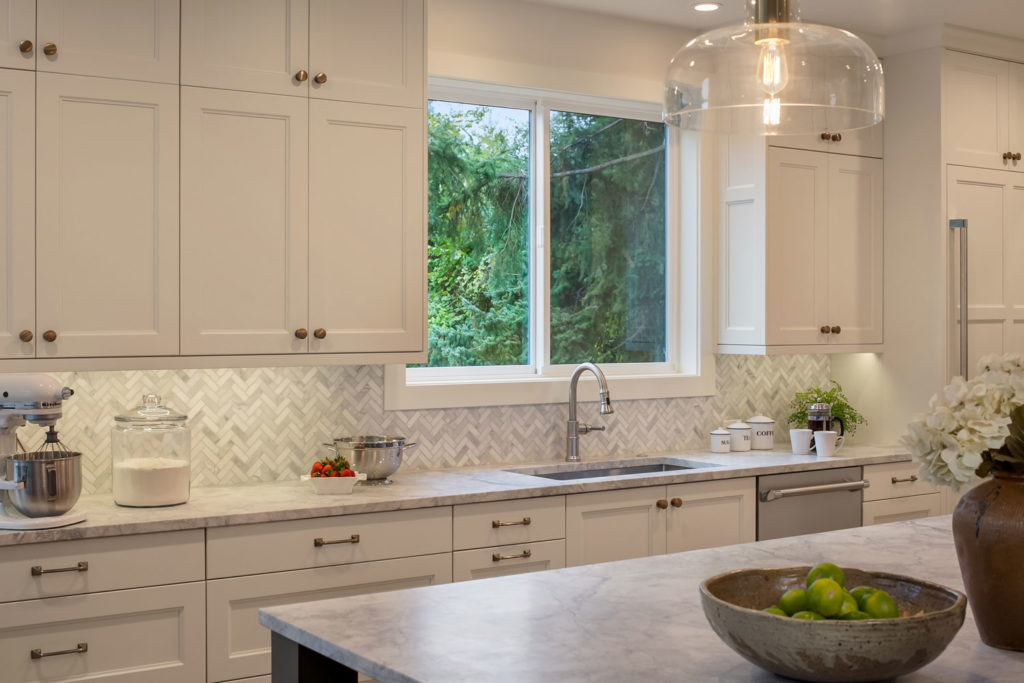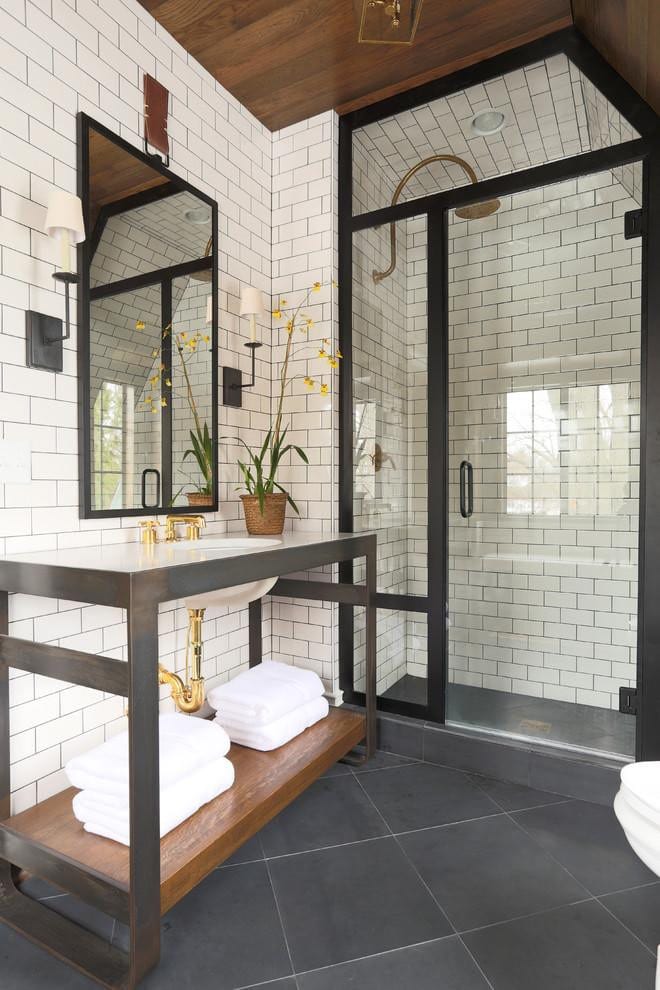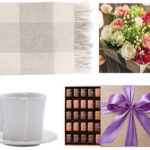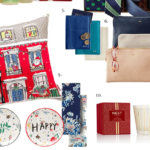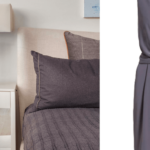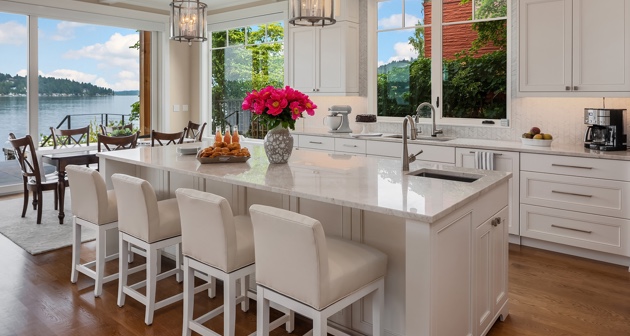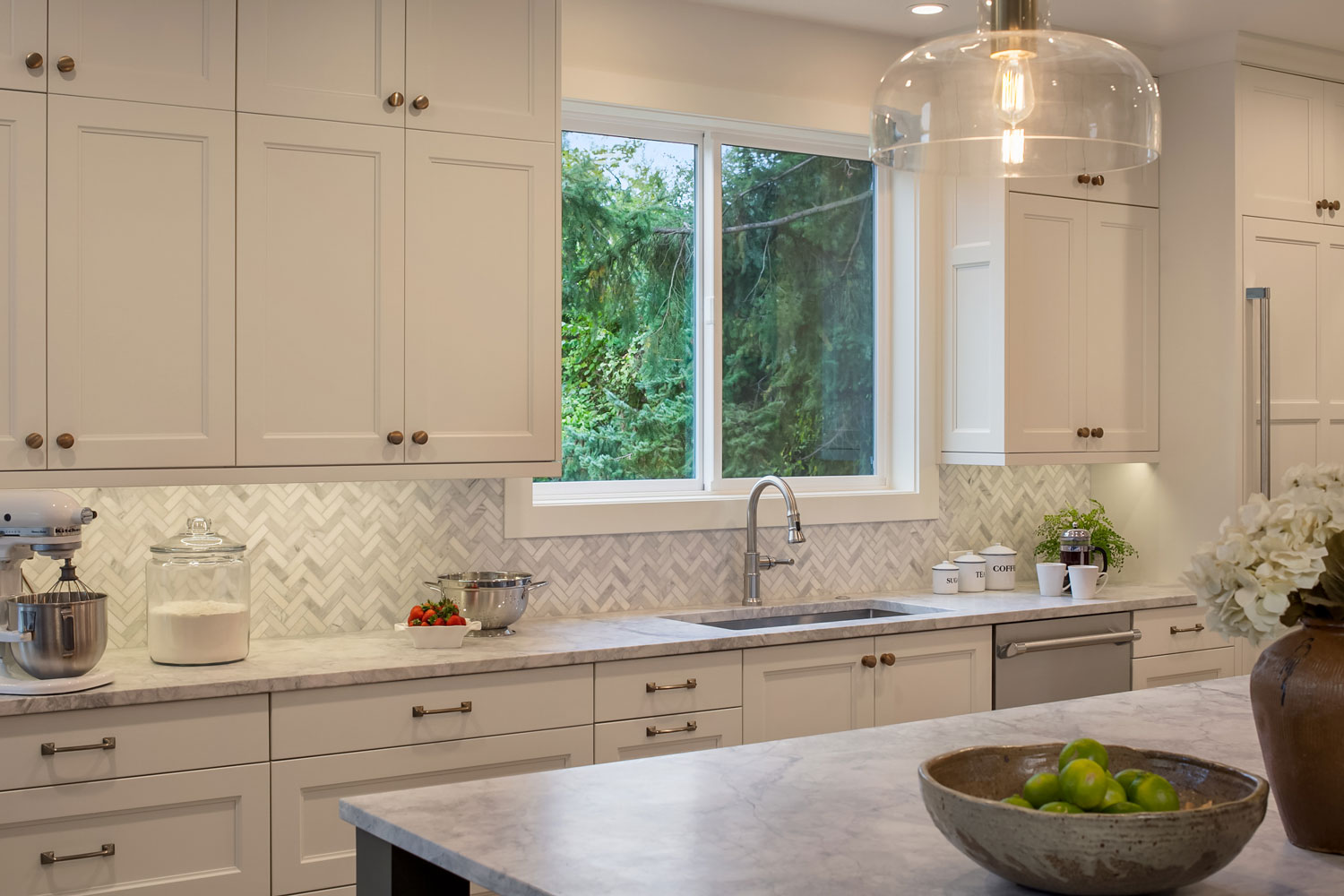
Let’s talk tile! There are many styles, patterns and materials available when it comes to tile – whether it be ready-made or custom, there are an endless array of options to choose from. An element of tile design that makes as much of an impact as the color or pattern is the layout. The layout of a tile can help make a room feel larger or smaller, it can carry the eye to create dimension and even become a focal point in a space.
Yes, there are many more layouts than your classic straight lay or herringbone! Some of these layouts only work in certain spaces and can also serve a different purpose, so let’s talk about the basics and get some ideas for your next reno! 🙂
The Straight-Lay Pattern
This is the most basic and versatile layout – it works well in many spaces and it’s the easiest to install. The straight-lay creates a grid-like pattern that is simple and clean. Just because it is basic, doesn’t mean it can’t be stylish – choose the right color and pattern, and you will transform your space into something stunning. It can be used in almost any space of the home – indoors or outdoors – from floor to backsplash and countertop to patio. (Tip: Straight-lay is not the best to use in a narrow room…the straight grout line parallel to the wall will make a room appear smaller than it is.)
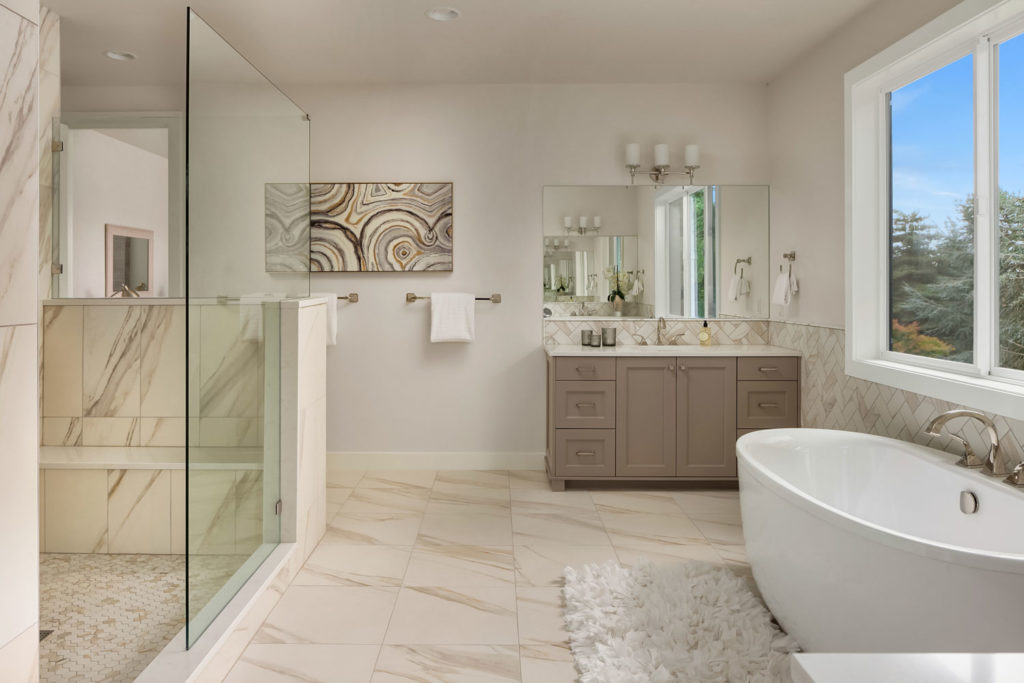
The Running Bond Pattern
… or Brickwork layout. It can be used with a square tile, but for the signature brick look, rectangle tiles are the way to go. Think subway tile! This layout can be used on floors but it is most commonly used as a backsplash tile. If you’re installing the tile yourself, this is a great one to use if you want to hide imperfections – like crooked walls and uneven surfaces. The layout creates a whole cohesive look which makes it near to impossible to spot those imperfections. (Tip: When installing, each tile will need to be set so that it starts at the center of the tile below it.)
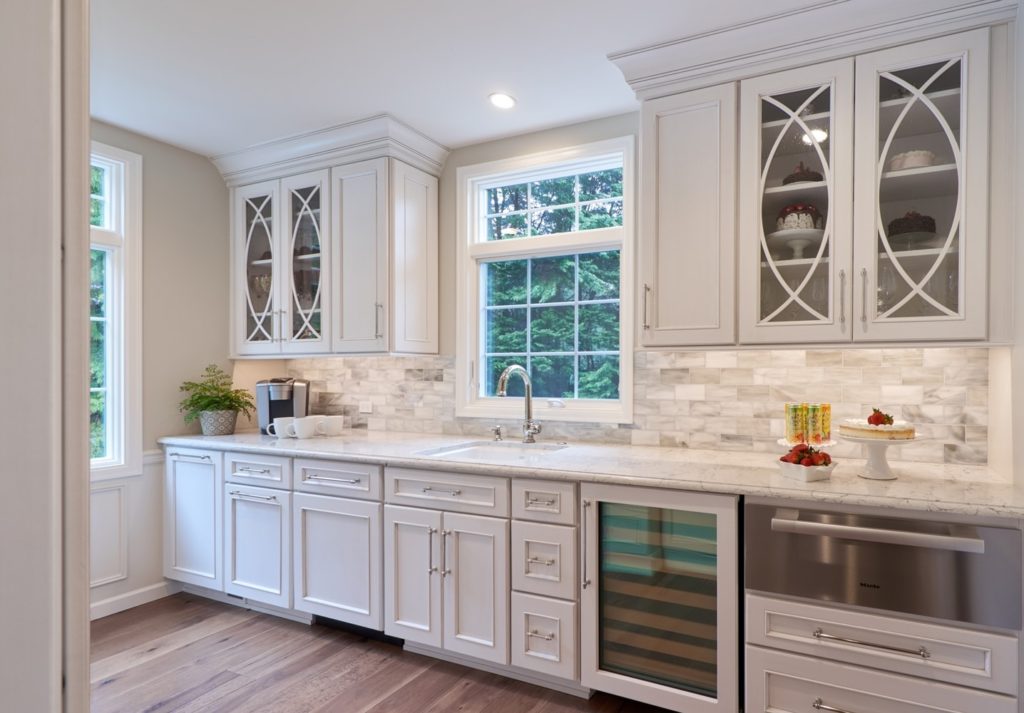
The Checkerboard Pattern
This one almost doesn’t need an introduction – the classic black and white tile. This is a great pattern to add a vintage or even retro style to a room, but when complimented with modern decor and architecture it can also give a space a striking, modern feel. Checkerboard is most commonly used on floors, but it can also be used to create a striking backsplash. (Tip: For the checkerboard pattern to reach its fullest potential and not lose its classic look, pair it with solid colors and simple decor.)
The Checkerboard Pattern can also work in other colors. We created the pattern with contrasting tones in this laundry room in our Cascade Mountain Home project.
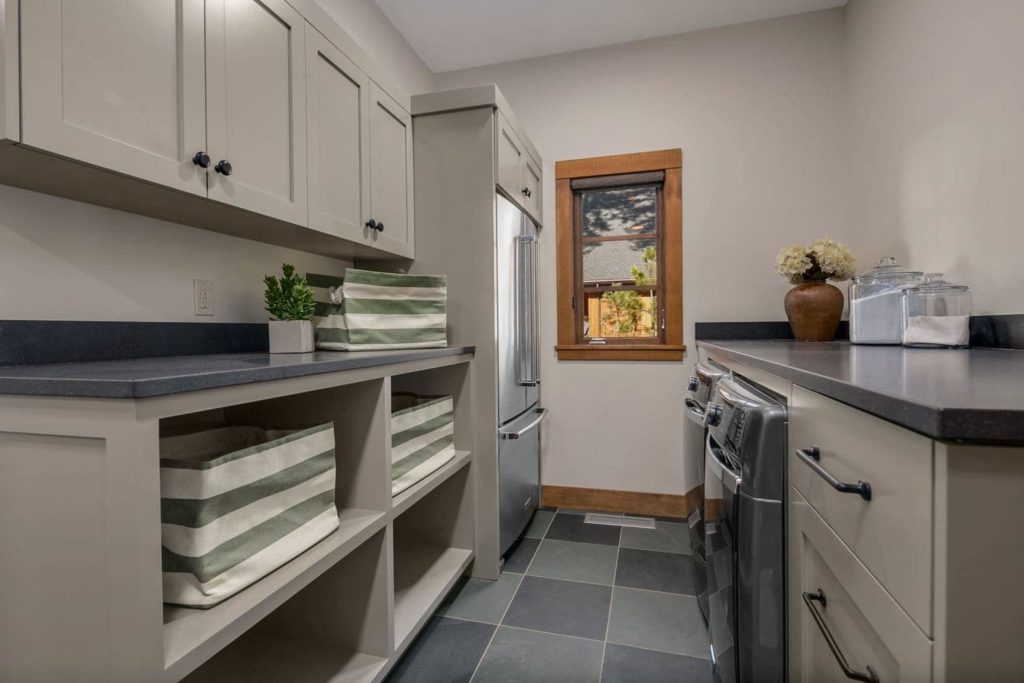
The Herringbone Pattern
The herringbone pattern gets its name from the resemblance it has to the skeleton of a herring fish – Fun fact! This intricate pattern is usually best for the pros to take care of – the tiles are laid out in a V-shape which starts with laying a tile at a forty five degree angle to form one side of the V-shape. A second tile is added perpendicular to the end of the first which forms the other side of the V-shape. The herringbone pattern is one of my favorites to design on a kitchen or bathroom backsplash, but it is a striking pattern when used on the floor. (Tip: This pattern is best used in a smaller space, this intricate layout can appear too busy for a larger space.)
The Diagonal Pattern
Also known as the diamond pattern. This layout is quite simply the straight-lay pattern but the tiles are laid at a 45 degree angle to mimic a diamond shape. Like the Herringbone Pattern, this pattern is one of the most popular ones to use in small or narrow space to make it appear larger as the eye is drawn to the widest part of the tile. The Diagonal Pattern is a great choice for entryways, hallways and bathrooms. (Tip: Naturally, large tiles make a space appear larger, so when you lay a large tile in the Diagonal Pattern, you will maximize the effect.)
And the patterns don’t stop there! See the Basket Weave Pattern – often seen in a mosaic tile and great for small spaces. Windmill Pattern – a combo of rectangle and square tiles, great for a backsplash or even used as a border for another pattern. Versailles Pattern – also a combo of rectangle and square tile that fit together in a repeating puzzle layout, it is almost always seen as a floor tile. The Pinwheel Pattern – could be mistaken as the Windmill Pattern, except it is laid with square tiles and is well known as a floor tile.
Are you feeling ready to tackle your own tile project?
Kindly~Michelle

